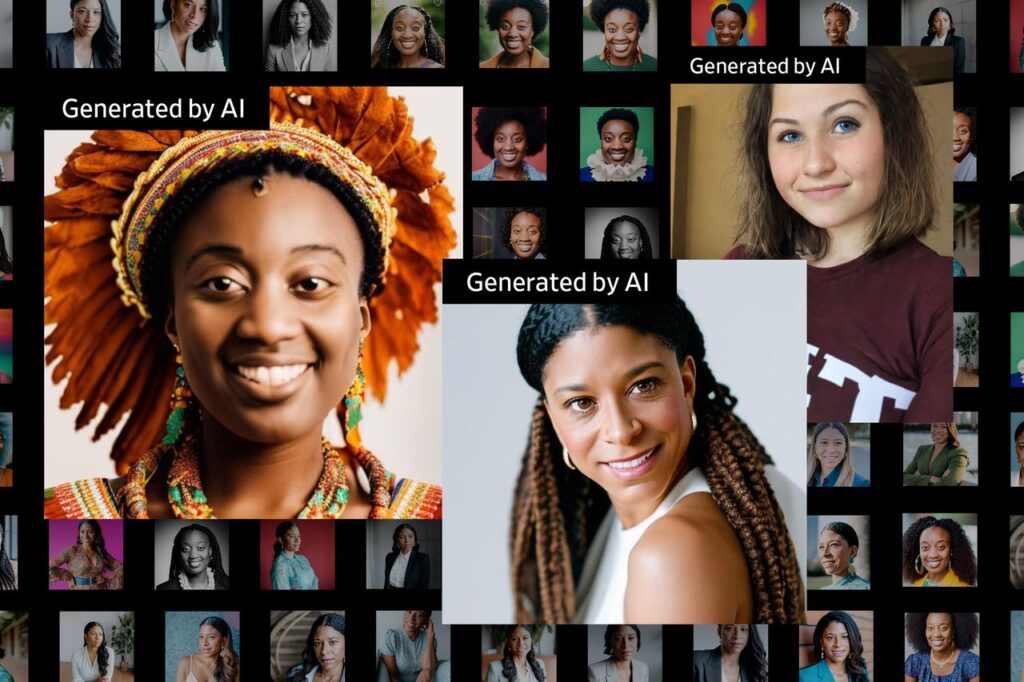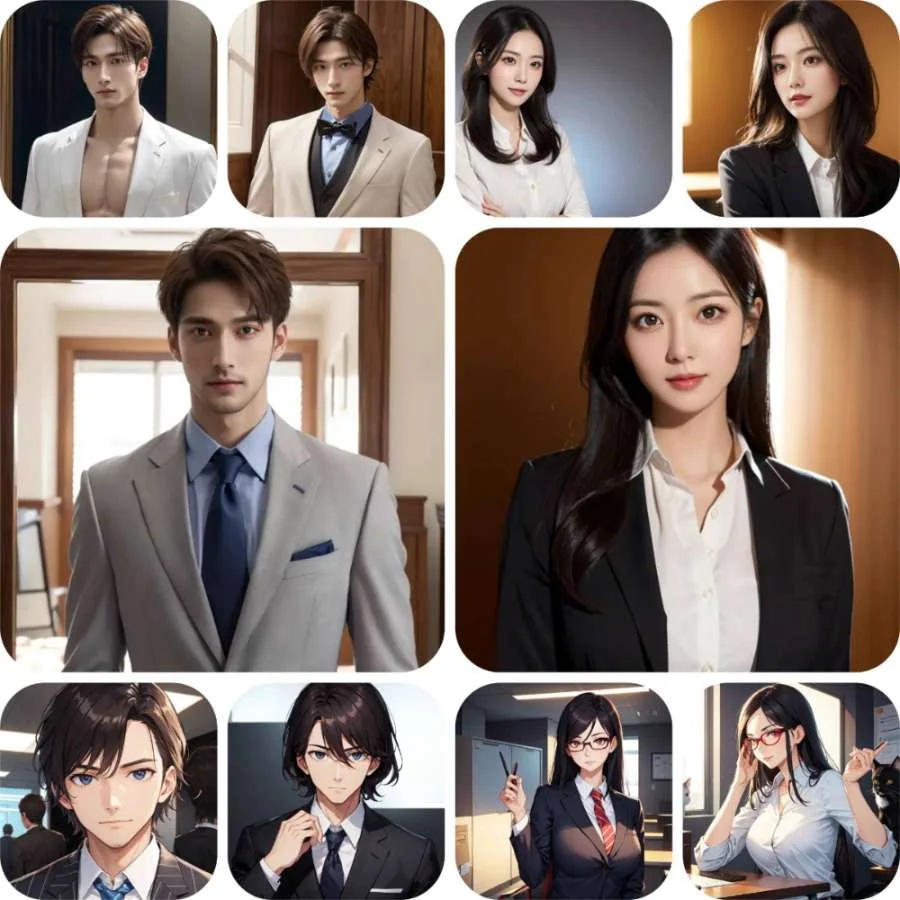In recent years, the advent of artificial intelligence (AI) has revolutionized various industries, including photography. AI headshot generators have emerged as powerful tools capable of producing realistic and high-quality portraits with minimal human intervention.
In this comprehensive exploration, we delve into the impact of AI headshot generators on portrait photography, examining their capabilities, benefits, and implications for photographers and enthusiasts alike.
The Rise of AI in Photography
Artificial intelligence has permeated every facet of modern life, and photography is no exception. AI algorithms have advanced to the point where they can analyze, process, and manipulate images with remarkable precision and efficiency. AI headshot generators leverage these advancements to generate lifelike portraits from scratch or enhance existing photographs.
Understanding AI Headshot Generation
AI headshot generators utilize deep learning algorithms trained on vast datasets of human faces to generate realistic portraits. These algorithms can replicate various facial features, expressions, and emotions with astonishing accuracy. By analyzing patterns and characteristics in the input data, AI systems can generate new images that mimic human subjects convincingly.
The Benefits of AI Headshot Generators

Source: wsj.com
1. Time and Cost Efficiency:
AI headshot generators streamline the portrait photography process by automating tedious tasks such as retouching, cropping, and color correction. This saves photographers valuable time and resources, allowing them to focus on more creative aspects of their craft.
2. Consistency and Quality:
AI algorithms ensure consistency and quality across multiple headshots, maintaining uniformity in lighting, composition, and facial features. This consistency is particularly beneficial for businesses and professionals seeking cohesive branding across their digital platforms.
3. Accessibility and Inclusivity:
AI headshot generators democratize portrait photography by making it accessible to a broader audience. Individuals with limited photography skills or resources can use AI-powered tools to create professional-looking headshots without the need for expensive equipment or specialized training.
4. Flexibility and Customization:
AI headshot generators offer photographers a wide range of customization options, allowing them to adjust facial features, expressions, and backgrounds to suit their artistic vision and client preferences. This flexibility empowers photographers to experiment with different styles and aesthetics, resulting in more personalized and engaging portraits.
Implications for Portrait Photographers

Source: animegenius.live3d.io
While AI headshot generators offer undeniable benefits, they also pose challenges for professional photographers. The widespread availability of AI-generated headshots may commoditize portrait photography, diminishing the perceived value of professional services. Additionally, photographers must adapt to evolving technological trends and differentiate themselves through creativity, expertise, and personalized client experiences.
Ethical Considerations and Challenges
1. Privacy and Consent:
AI headshot generators raise concerns about privacy and consent, especially when generating portraits of individuals without their explicit permission. Photographers and AI developers must prioritize ethical practices and ensure compliance with data protection regulations.
2. Cultural and Societal Implications:
The proliferation of AI-generated headshots may perpetuate beauty standards and biases inherent in the training datasets. It is essential to address diversity and inclusivity concerns to ensure that AI systems reflect the richness and diversity of human experiences.
3. Authenticity and Creativity:
AI headshot generators have the potential to streamline the portrait photography process but may also compromise the authenticity and creativity inherent in human-driven photography. Photographers must strike a balance between leveraging AI tools for efficiency and preserving the artistic integrity of their craft.
The Future of Portrait Photography
Remove objects from photos AI signifies a significant advancement in the realm of portrait photography, reflecting just one facet of the evolving landscape in this domain. As technology continuously progresses, photographers are compelled to strike a delicate balance between embracing innovation and preserving the authenticity and artistry intrinsic to their craft. Leveraging AI tools responsibly and creatively empowers photographers to transcend the confines of traditional portrait photography, enabling them to create captivating visual narratives that resonate deeply with viewers.
The advent of AI-driven object removal technology has revolutionized the way photographers approach their compositions. With the power of AI algorithms at their disposal, photographers can seamlessly eliminate unwanted elements from their images, enhancing overall visual appeal and narrative coherence. This innovative approach streamlines the editing process, allowing photographers to refine their compositions with precision and efficiency.
By integrating AI-driven object removal tools into their workflow, photographers can unleash their creativity and explore new dimensions in visual storytelling. The ability to harness AI technology in removing objects from photos empowers photographers to craft images that evoke emotion, provoke thought, and leave a lasting impact on their audience.
The integration of AI-driven object removal technology represents a pivotal milestone in the evolution of portrait photography. As photographers embrace the capabilities of AI, they embark on a journey of innovation and discovery, pushing the boundaries of creativity while upholding the timeless principles of authenticity and artistry.
Source: fotor.com
Conclusion
The impact of AI headshot generators on portrait photography is profound, as they reshape industry standards and push the boundaries of traditional practices. While AI brings unprecedented efficiency and accessibility to the field, it also introduces a host of ethical, cultural, and creative considerations that demand careful navigation. As we navigate this technological frontier, it becomes increasingly vital to strike a delicate balance between leveraging innovation and preserving the essence of human ingenuity. Ensuring that AI enhances, rather than diminishes, the artistry and authenticity of portrait photography is paramount. Ultimately, the future of portrait photography thrives at the intersection of technology, creativity, and human expression. Through thoughtful exploration, collaboration, and adaptation, photographers can harness the transformative power of AI to redefine the very essence of portrait photography and create captivating visual narratives that resonate deeply with audiences worldwide.



